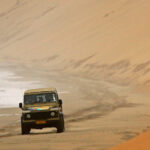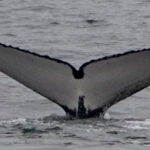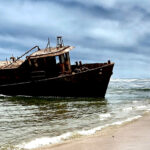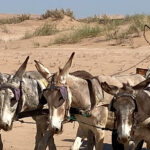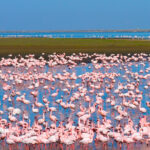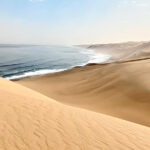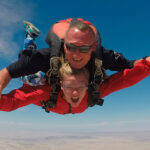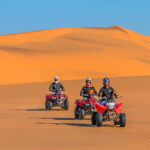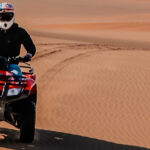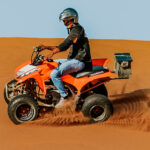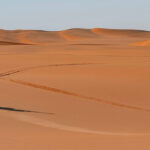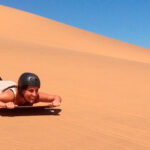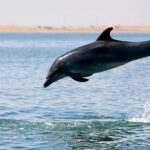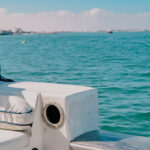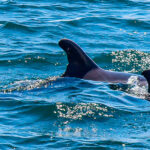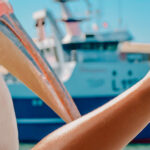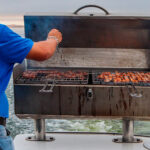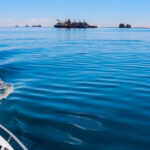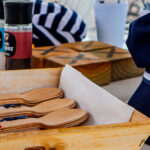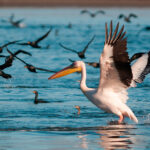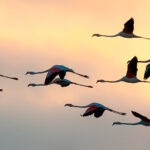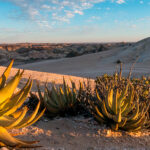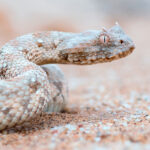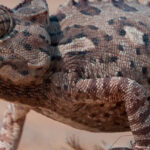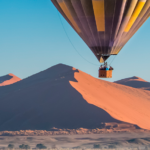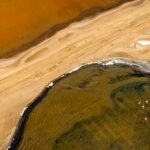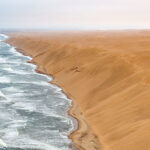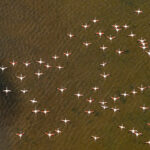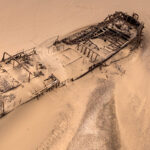
The Kuiseb Delta vegetation comprises of Tamarisk Trees Tamarix usneoides, stunted vegetation and huge ‘Nara’ hummocks Acanthosicyos horrida with a backdrop of the red dune fields. Further upstream towards Rooibank fairly large Camelthorn Trees Acacia erioloba are also found. It is here that your guide will find the only true endemic of the country, the arid adapted Dune Lark. Out of the 16 near endemic birds of Namibia the Dune Lark is the only true endemic. Fortunately 90% of the population falls within protected areas, both national and private so there is no threat to their survival.
This little lark is one of the most arid-adapted birds in the world. It lives at the base of the huge red dunes of the Namib where it is most active in the morning and late afternoon. Here you can find it running rapidly over the bare sand between patches of vegetation and dune grass. It scurries between the dunes searching for seeds and small insects on which it feeds. By mid-afternoon the birds become quiet and take shelter in the shade of grass tufts on the dune edges. At this time of the day where the surface can reach a scoring 55 – 60⁰ C, the shaded areas in which they roost may only be around 33⁰ C. Approximately 20 – 30% of the Dune Lark’s diet is invertebrates, ants, termites, grasshoppers etc. This helps to metabolise enough water to survive as this species does not drink water. Besides this species we may also see the coastal form of Tractrac Chat en route and in the river bed there are several other species such as Bokmakierie, Black-chested Prinia, Ashy Tit, Chestnut-vented Tit Babbler, Yellow-bellied Eremomela, Cape Sparrow, Dusky Sunbird, Pale Chanting Goshawk, Rock Kestrel, Lanner Falcon and Black-chested Snake Eagle.
From the Kuiseb we travel to the Walvis Bay Lagoon and salt pans (proclaimed as a RAMSAR site) where depending on the time of the year you may see thousands of wetland species (over 100,000 birds in summer and less than 50,000 in winter) such as Curlew Sandpiper, Knot, Sanderlings, Little Stint, both Greater and Lesser Flamingos, Great White Pelican, various Gulls and Terns and with luck Terek Sandpiper, Great Sandplover, Red-necked Phalarope, Franklin’s Gull and European Oystercatcher may be seen in huge numbers. However the best time to see most of the abovementioned species is in our summer months from December to mid-April this is when most of the migrants have arrived to feed on the lagoon mudflats.

Price:
/ per person
Attraction

The Kuiseb Delta vegetation comprises of Tamarisk Trees Tamarix usneoides, stunted vegetation and huge ‘Nara’ hummocks Acanthosicyos horrida with a backdrop of the red dune fields. Further upstream towards Rooibank fairly large Camelthorn Trees Acacia...
VIEW MORE
